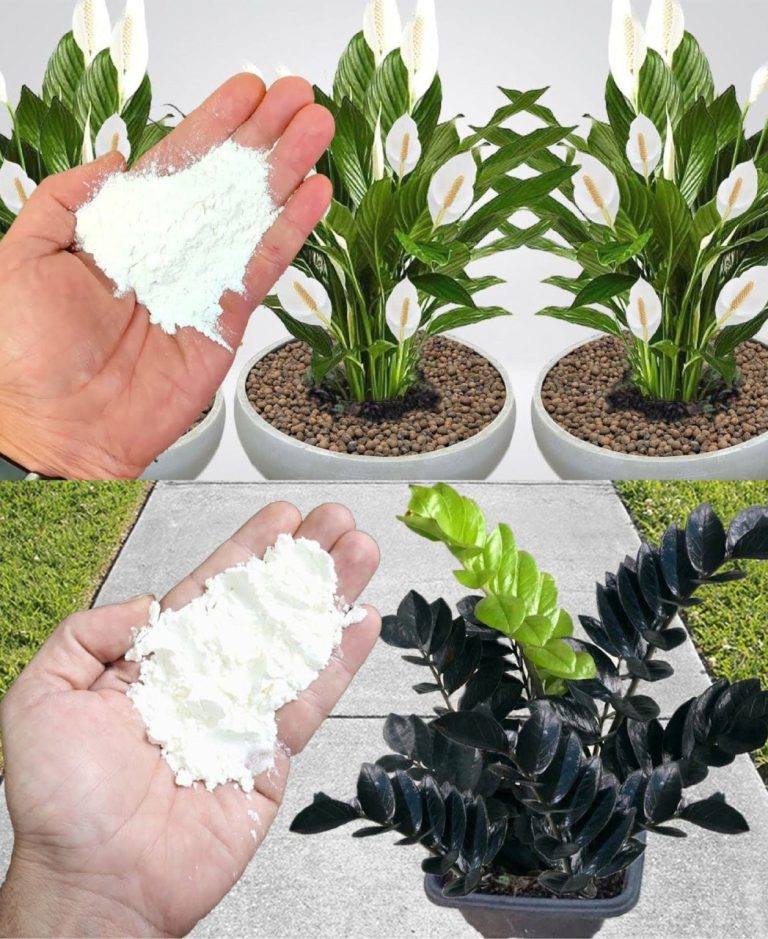ADVERTISEMENT
2. **Sprinkle a Pinch**: For most plants, a small pinch of Epsom salt (about 1 tablespoon per plant) is enough to provide the benefits without overdoing it.
For Complete Cooking STEPS Please Head On Over To Next Page Or Open button (>) and don’t forget to SHARE with your Facebook friends
3. **Mix with Soil**: Gently mix the Epsom salt into the soil around the base of the plant. Be sure not to over-saturate the soil. Water the plant afterward to help the Epsom salt dissolve and reach the roots.
4. **Frequency**: Apply Epsom salt once every month or when you notice that your plant is beginning to bloom. Be mindful not to overdo it, as too much can lead to nutrient imbalances.
#### **Method 2: Foliar Spray**
For an extra boost to your plants, you can apply Epsom salt as a **foliar spray**. This method allows the plant to absorb the nutrients directly through the leaves, providing quick relief and nourishment.
1. **Dissolve in Water**: Mix **1 tablespoon of Epsom salt** in **1 gallon of water**. Stir until the salt is fully dissolved.
2. **Spray the Leaves**: Using a spray bottle, lightly mist the leaves of your plants, especially around the areas where flowers are budding.
3. **Spray at the Right Time**: It’s best to spray in the early morning or late afternoon when the sun isn’t too strong. This helps prevent the leaves from getting burned.
#### **Method 3: Epsom Salt Fertilizer Mix**
For more long-term benefits, you can create an **Epsom salt fertilizer mix** that you can use throughout the growing season.
1. **Mix Epsom Salt with Other Fertilizers**: Combine **1 tablespoon of Epsom salt** with **1 tablespoon of balanced liquid fertilizer** (such as a 10-10-10 formula).
2. **Water Regularly**: Use this mixture to water your plants every 4-6 weeks to promote healthy growth and blooming.
—
### **Precautions to Keep in Mind**
While Epsom salt is a great tool for plant care, it’s important to use it correctly to avoid harming your plants:
– **Don’t Overuse**: A little goes a long way. Using too much Epsom salt can lead to an excess of magnesium, which can interfere with the uptake of other essential nutrients like calcium and potassium.
– **Check Soil Health**: Before adding Epsom salt, it’s a good idea to check your soil’s nutrient levels. If the soil already has high levels of magnesium, additional salt may not be necessary and could cause harm.
– **Test on a Few Plants First**: If you’re unsure how your plants will react, start by applying a pinch of Epsom salt to just one plant. Monitor its progress to ensure it benefits from the treatment.
—
### **Other Benefits of Epsom Salt for Plants**
Aside from helping with flowering, Epsom salt offers a wide range of benefits for your plants:
– **Improves Root Development**: Magnesium helps roots absorb essential nutrients, promoting overall plant health.
– **Repels Pests**: Sprinkling Epsom salt around the base of plants can deter pests like slugs, snails, and other insects that might try to nibble on your plants.
– **Enhances Soil Structure**: Epsom salt can help improve soil texture by making it more porous and allowing better water retention.
—
### **Conclusion: A Simple Pinch for Beautiful Blooms**
Achieving lush and long-lasting flowers doesn’t have to be complicated or expensive. With just **one pinch** of **Epsom salt**, you can encourage your plants to bloom more vibrantly, develop stronger roots, and enjoy a longer blooming period. This simple and natural method can be a game-changer for gardeners looking to get the most out of their flowering plants.
So, whether you’re tending to roses in your garden or houseplants on your windowsill, remember: a pinch of Epsom salt is all it takes to keep your plants healthy, vibrant, and blooming beautifully!
—
Let us know how Epsom salt works for your plants or if you have any other gardening tips you’d like to share! Happy gardening!
